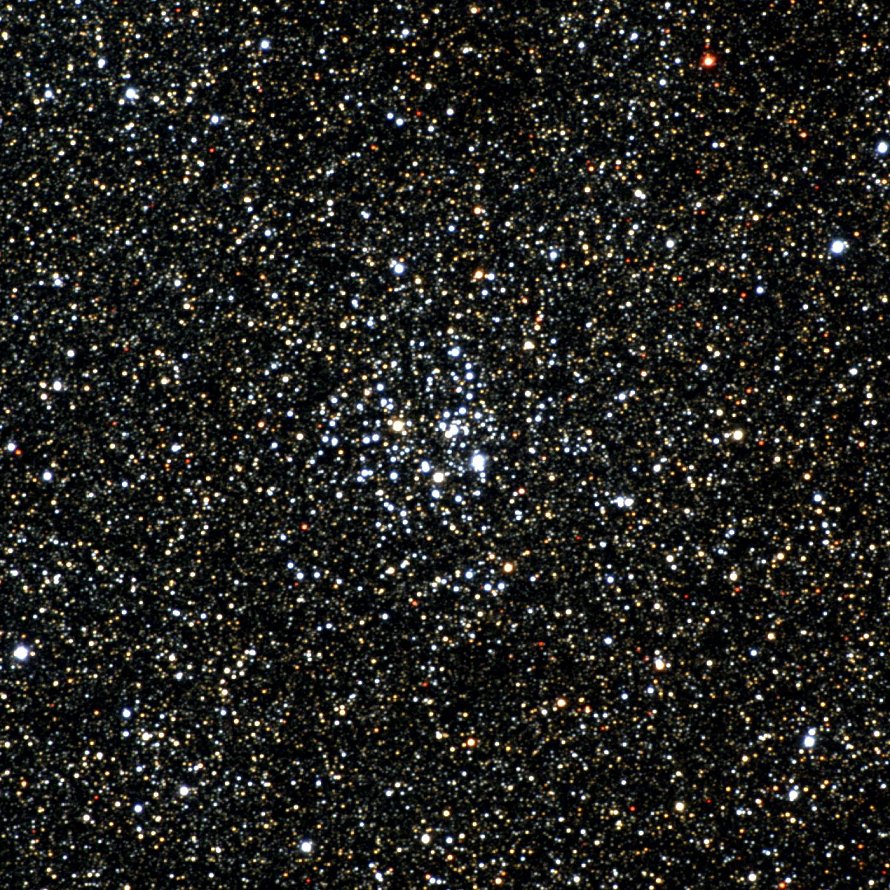M26 (NGC 6694)
Messier 26 (NGC 6694) is an open cluster located in the constellation Scutum, in the Sagittarius Arm of the Milky Way Galaxy in the Local Group of galaxies. M26 is 5200 light years away from Earth.
M26 is best viewed during late summer, is magnitude 8, and can be viewed with binoculars. M26 is 14' in apparent size. For reference, the full moon is 30'.
Observing difficulty: Easy
- Name:
- Type:
- open cluster
- Constellation:
- Scutum
- NGC or IC:
- NGC 6694
- Magnitude:
- 8
- Viewing:
- binoculars
- Size:
- 14'
- Distance (light years):
- 5200 LY
- RA:
- 18h 45.2m
- Dec:
- -9 24'
- Season:
- late summer
- Milky Way location:
- Sagittarius Arm
- Galaxy group:
- Local Group
- Messier Marathon #:
- 89
* The naked eye can see up to magnitude ~7-8 objects under ideal dark sky conditions.
An Intriguing Open Star Cluster in Scutum
Located in the small constellation Scutum, Messier 26 (M26) is an open star cluster, less known to casual observers but holding an intriguing secret for more invested astronomers. This article discusses the discovery of M26, its physical properties, its apparent magnitude, and provides guidance for amateur astronomers aiming to locate and observe this captivating celestial object.
Discovery and Observation
M26 was first documented by French astronomer Charles Messier in 1764. Positioned around 5,000 light-years away from us, M26, despite being relatively overlooked, holds its own charm for observers, especially under the gaze of a medium-sized telescope.
Physical Characteristics and Magnitude
Spanning approximately 22 light-years in diameter, M26 is composed of around 90 known stars, with a concentration of the brightest stars towards the core of the cluster. One of the intriguing aspects of M26 is an apparent 'void' in the center, possibly an area of lower star density or an interstellar dust cloud obscuring our view. The cluster has an apparent magnitude of around 8.0, which makes it invisible to the naked eye but can be detected with a pair of binoculars or a small telescope under dark skies.
Astronomical Significance
While M26 may not be the most impressive open cluster visually, its central star void presents a unique opportunity for astronomers to study the interstellar medium's effect on starlight. Understanding such phenomena provides key insights into the life cycle of stars and the dynamics of star clusters.
Finding and Viewing M26
M26 is located in the constellation Scutum, and it is best observed during the summer months in the Northern Hemisphere. To find M26, locate the star Alpha Scuti; the cluster lies approximately 5 degrees to the west. For those using binoculars, M26 will appear as a faint, cloudy patch against the star-studded backdrop of the Milky Way. The use of a telescope will start to resolve individual stars and give the best viewing experience.



